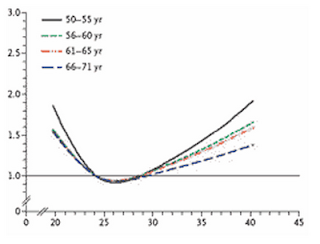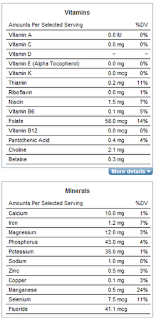I received a few interesting emails about the Poetry Should Be Subversive article by Simon Armitage, and for those of you with a keen eye, you’ll be aware that he is heading up a week of non-competitive poetry related events at the Southbank as part of the Cultural Olympiad. What he calls the Poetry Parnassus, or the ‘most democratic and ancient art-form.’ For those of us feeling slightly jaded by both the Jubilee celebrations and impending Olympic histrionics, it was a relief to read a comment by Armitage in this weeks Observer, in which he reiterates the role of the arts (poetry) not just as celebratory, but as giving voice to dissent.
“...when I watch the Olympics, it sickens me that people are gagged and labelled and everybody has to stand up, drape themselves in a flag and stamp to the national anthem in front of the official fizzy drink. That is not the way most people feel about their country. This is an opportunity to address some of those issues.’
Its almost heartening to note then, that the Westfield Shopping Centre in Stratford is to close its car-park for the duration of the Olympics. A big diddums to the poor bleating shoppers, who like to drive as close as humanly possible to get their fill of burgers, posh frocks and plasma screens. Your merchandise pushers and peddlers too, will have to use public transport for once.
You can bet, that the shopping centre is going to be full of reading, dancing, sculpture and a million other Cultural Olympiad activities that will make for happy, passive shoppers. As “...part of the £13.5 million high quality public realm project to improve Stratford Town Centre for residents and businesses and offer a unique visitor experience,” Mayor of Newham, Sir Robin Wales believes that work like the recently completed The Shoal will ‘...offer a unique visitor experience.’
The sculpture is made up of around 100 titanium clad, giant ‘leaves’, at between 15 and 19 meters high and is situated along the Great Eastern Road. David West, of the projects design team, Studio Egret West said: ‘The Shoal was born of a desire to turn a negative into a positive. Instead of screening the back of house of the Stratford shopping centre, which now finds itself in the foreground, we have created a playful and dynamic edge that brings a moment of delight to those arriving in Newham. ‘ Mmm, you can judge the merits of the work for yourself by visiting e-architect. Does this 'art' inspire and revitalise communities? I'd like to know what you think.
Still, as a temple to the power of products, it’s a rip-roaring artistic and cultural legacy for the UK isn’t it? An Olympic sized gateway to the largest urban shopping centre in Europe. Makes you proud to fly the flag.
And as the Olympic Torch continues to gutter and wend its way through our rain-soaked and cobbled Northern climbs, its equally heartening to see that John Pillger has lost none of his forensic scrutiny of news that suspiciously falls below the radar.
It’s with the Olympics in mind, and art in the public realm, that Pilger shines a torch on the decorators of the Olympic stadium facade, Dow Chemical Corporation, who are funding a £7m, 900m (0.56 miles) long by 20m (67ft) high, fabric wrap for the Olympic stadium. Not quite the Segregation Wall in length, but equally pernicious.
I’d been aware of the connection between Dow and its purchase of Union Carbide "the company responsible for the Bhopal gas leak [in India in 1984] which killed 7,000 to 10,000 people immediately and 15,000 in the following twenty years", but what I wasn’t aware of was Dow’s long illustrious position in the development and sales of both Napalm and Agent Orange in the Vietnam War. Irrelevant to our proud games you might suggest? This short and sharp article by Pilger, persuades me otherwise. Read it by clicking on the image of one of the 4.8 million uncompensated child victims of Agent Orange below. If you are outraged, share this.
I made a decision not to show a child's image, as it felt exploitative, so here is Black Square, 1915, by Kazimir Malevich. I urge you to simply type, Victim Agent Organge into google, or click on the Black Square.
ANNE BASTING EVENT at MMU
I’ve had lots of enquiries about the Anne Basting event on the 10th July. Please note, I can’t answer all the email questions about the event just yet, but will post details on line asap. I will of course, confirm places with those who’ve expressed an interest, at least a week before the event. It will in all likelihood, take place in the early evening here at MMU on the 10th July. This will be a fantastic evening for all those interested in Dementia and the Arts and a pleasure to welcome Anne.
Group music sessions 'may boost empathy in children'
Judith Burns, Education reporter for the BBC News reports that regularly playing music in groups may improve children's ability to empathise with others. Researchers from Cambridge University compared empathy skills in children who played weekly music-based games for a year with those who did not. The musical group scored higher in end-of-year tests of how well they recognised other people's emotions. Click on the drumming babies for more.
Wellcome Trust – Peoples Awards (UK)
Awards of up to £30,000 are available under the Wellcome Trust's Peoples Awards for projects that encourage public debate and understanding of biomedical science. Projects can be funded for up to three years and can include activities such as:
- Workshops and seminars
- Arts projects
- Teaching materials or techniques to encourage wider discussions
- Projects that utilise the collections of the Wellcome Library and the Wellcome Collection at the Science Museum.
The next applications deadline is the 27th July 2012. Click on the Visualisation of a Protein below!
BBC Children in Need (UK)
BBC Children in Need provides grants for up to three years to organisations (including schools) working with disadvantaged young people aged 18 or under. Within the BBC Children in Need grants programme, organisations can apply for Small Grants of £10,000 or less per year for up to three years and for Main Grants of over £10,000 per year for up to three years. Funding is available to organisations that work with young people who are suffering from:
- Illness
- Distress
- Abuse or neglect
- Are disabled
- Have behavioural or psychological difficulties
- Are living in poverty or situations of deprivation.
ARROGANCE and SELF-DELUSION
(Or, Being Mentored by a Higher-Inteligence)
I’ve had some correspondence from people asking me, just what was all that Huge Ever Growing Pulsating Brain That Rules from the Centre of the Ultraworld, all about? Thank you for being curious...and more will emerge very shortly.
I’ve had some correspondence from people asking me, just what was all that Huge Ever Growing Pulsating Brain That Rules from the Centre of the Ultraworld, all about? Thank you for being curious...and more will emerge very shortly.
In short, its a ‘developing’ story about how those of us in this arts/health movement feel that creativity/culture/arts offer so much more than selfish individualism, and that those of us working in any kind of advocacy role, must genuinely represent and support the communities of interest we claim to represent.
Moreover, if the failed ‘market’ model is imposed on the arts, we will be awash with the corporate, insipid and irrelevant. Deluded self-belief and arrogant brand placement, run the risk of reducing this emerging sector to some panacea, or worse still, a placebo for all societal ills. Much, much more to follow...
Thank you as ever...C.P.
























